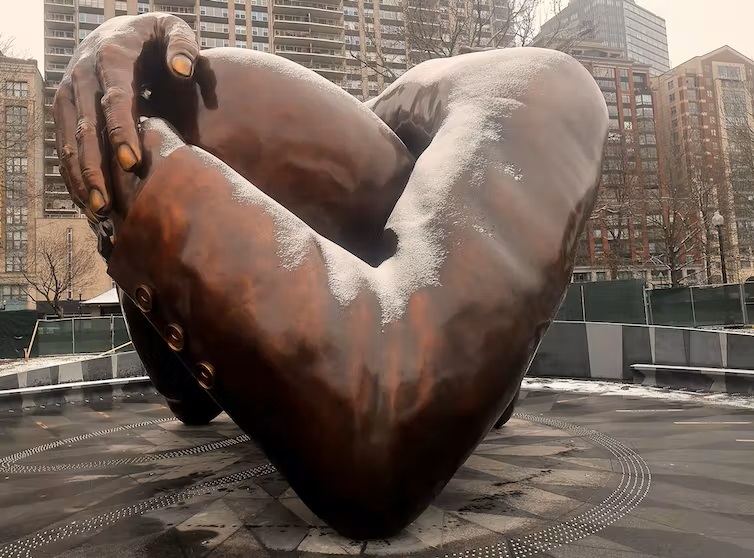by Kristin Ann Hass, University of Michigan
As an acclaimed photographer and conceptual artist, Hank Willis Thomas has grown accustomed to criticisms of his unconventional art and concepts of identity.
But even Thomas had never experienced anything like the reaction to his latest sculpture, designed to commemorate the lives of Coretta and Martin Luther King Jr., two of the most revered civil rights leaders in modern American history.
Unveiled in January 2023, the two sets of 20-foot-tall bronze arms appear floating in air and are embracing. Those who visit the statue in Boston can also walk underneath it into the space between the Kings’ arms.
It was in Boston after all, that the two met and fell in love.
Despite the intended show of mutual affection between the Kings, many of the tweets shared on national news feeds after the unveiling were crude and misinterpreted arms for other body parts.
Tweeters decried: “Disrespectful,” “Obscene,” “Phallic,” “Gross” and “Insulting.”
In the online magazine Compact, Seneca Scott, a labor union activist and cousin of Coretta Scott King, depicted the sculpture, titled “The Embrace,” as a “masturbatory metal homage to my legendary family members” and an insult to Black people everywhere.
As a scholar of visual culture, public memorials and race, I know these reactions to a new monument are not uncommon.
In fact, outrage is the common response.
Shattering the idea of a conventional memorial
“The Embrace” is unusual and was unveiled at a time of intense national debate about the public memorials of white men and the dismal histories of representing Black people and women.
Across the U.S., Confederate monuments and statues of Christopher Columbus and Teddy Roosevelt have been passionately defended – and have come tumbling down over the past 10 years.
This sculpture…
Read the full article here





